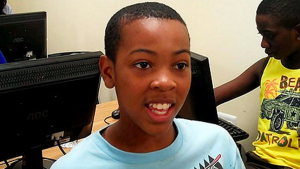Unfettered criticism of news and media literacy education is essential in the search for best practices
A new piece in Columbia Journalism Review entitled News Literacy vs Media Literacy sets up an us-vs-them paradigm to position news literacy as fundamentally distinct from media literacy. Jihii Jolly, the reporter, even wonders why I was invited to the upcoming News Literacy Summit in Chicago, given that I view news literacy as simply one of the many flavors of media literacy to be included in media literacy’s “big tent.”
Perhaps, as the reporter suggests, the differentiation-conflict frame is simply the product of former journalists who are jockeying for advantage for privileged access to the patronage and largess provided by philanthropies like the McCormick, Knight and MacArthur Foundations.
Some Backstory. You might be wondering how I got pinned as the “enemy” of news literacy. It’s all because of my reflective stance. I’ll admit that news literacy made a poor first impression on me when it was first described to me by one proponent as a “full employment program for retired journalists.” I was invited to give a talk in a panel presentation on news literacy at the AEJMC conference in Denver in 2010, which gave me an opportunity to discuss what we were learning about analyzing and creating news with children in Philadelphia. I talked about the Powerful Voices for Kids project and the learning principles at the heart of  that work, which included critical analysis of an approach designed to connect kids to news about their own community. That project had enabled students to develop interactive games (using Scratch) to explore press coverage of flash mobs in Philadelphia. In “Views on the News: Media Literacy Empowerment Competencies in the Elementary Grades,” we analyzed three instructional practices used by educators who helped children analyze and create news as part of the Powerful Voices for Kids project:
that work, which included critical analysis of an approach designed to connect kids to news about their own community. That project had enabled students to develop interactive games (using Scratch) to explore press coverage of flash mobs in Philadelphia. In “Views on the News: Media Literacy Empowerment Competencies in the Elementary Grades,” we analyzed three instructional practices used by educators who helped children analyze and create news as part of the Powerful Voices for Kids project:
In Grade 2, students created their own school news broadcast; in Grade 4, children developed a mock trial based on a current news event; in Grade 5, children analyzed local press coverage and composed a letter to the local news media about their concerns about the content of news and its impact on the community.
We examined the strengths and limitations of these three case studies as a way to help teachers reflect on the deep values and assumptions that are inevitably built into teaching about the news.
Being a Reflective Learner. I try to apply reflective thinking to all pedagogical experiences, examining how something is taught as much as the content of what is taught. My critique of news literacy instructional practices is rooted in what I have learned about education from working elbow-to-elbow with teachers and conducting professional development programs, from my own published research, and from my hands-on experience as a teacher myself.
Transmission Pedagogy. Observing presentations about news literacy, I noticed a lot of focus on transmission, as journalists explain in detail their verification routines. And while lectures may inspire and engage, the lecture inevitably positions students as spectators: for this reason, it is not ideal for promoting access, analysis, creation, reflection and action. At one time, I myself used to invite journalists to talk with university students about the craft of journalism. Sadly, these sessions did not inspire robust inquiry: they were too full of platitudes that did not map on to students’ lived experience with news. Don’t get me wrong: I value an active role for media professionals in K12 classrooms, but the best instructional strategies create co-work type opportunities where learners get active mentoring from journalists on media production projects.
News & Propaganda. Today, because of the gap between the “story of journalism” and the reality, news literacy may feel a little like propaganda (or religion). Like all educators, news literacy practitioners have certain key values that they want to impart to students – certain shibboleths or articles of faith. Maybe that’s why they are alienated from media literacy practitioners, who have other values, not about verification, authoritative sources and how important journalism is. Instead, media literacy practitioners use student-centered inquiry to explore the constructedness of media representations, the pleasures and challenges of media & technology in daily life, the relationship between meaning, identity and interpretation, the ways media influence attitudes and behavior, and the examination of media power in a cultural, historical, political and economic context.
I believe that learning to read the Economist and the New York Times is one of the most vital skills of an undergraduate education. Reading the news is one of the keys that opens the door to intellectual curiosity and lifelong learning. But today, the ability to recognize and resist propaganda in all its forms is also essential. We are just beginning to learn about the role of Washington think tanks in promoting propaganda on behalf of foreign governments. We educators are also implicated in how the philanthropic community is directly shaping the future of education. As much as I respect quality investigative reporting, I know that it alone will not stop the volume of propaganda that circulates to shape the world views of elites and ordinary people alike.
So I wonder: Will there be any reference to the concept of propaganda in the news literacy curricula sponsored by philanthropic organizations? Why or why not? Can we recover this concept to understand the extreme polarization of political opinion that masquerades for journalism today? It is also important to uncover the reasons why American K-12 teachers stopped teaching about news, current events and propaganda. As early as the 1930s, educators recognized the limitations of teaching students how to “detect fallacies,” according to Stanley Cunningham, in his book, Propaganda: A Reconstruction. In 2014, media polarization contributes to teachers’ disinterest in and hostility to discussions of news and current events in the classroom. Tackling propaganda in a head-on way could be part of the solution.
Like many in the media literacy movement, I want to promote civic engagement and accountability through dialogue about contemporary propaganda in all its forms. Stay tuned for The Media Education Lab’s forthcoming curriculum on teaching about propaganda, which we will release later this fall. It will feature a user-generated content gallery for people to upload, analyze and comment on contemporary propaganda.
In any case, I will be coming to the News Literacy summit to learn from ALL my colleagues. I bring a lot of respect and love for our shared mission — and a healthy regard for unfettered critique, where, as Cunningham says, we become “a community of people looking for each other’s mistakes.” It’s healthy for education and democracy because such a stance is the only one possible when surrounded by the volume of information and ideas available to us. By using the power of reflection and asking critical questions about the instructional practices of media literacy, we can nudge ourselves closer and closer toward discovering and enacting the “best practices” in media literacy that have the potential to transform the lives of children and young people everywhere.


News literacy as distinct from media literacy? Interesting. A large part of why media literacy is so important to me comes as a direct result of my direct involvement in the news industry. I will regularly have classes analyze coverage of events, and draw parallels to entertainment. Unless things have drastically improved in the 5 years since I worked in (broadcast) news (and they haven’t), I’d say news literacy is an important aspect of, rather than a distinct entity from, media literacy.